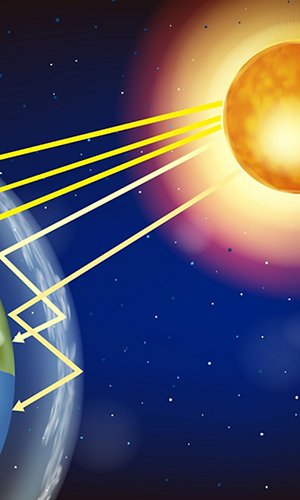Air is everywhere even if we cannot see, taste or touch it. It does not have a smell of its own, but it is full of smells and scents that it carries to our noses: it is the air that allows us to smell the fragrance of flowers or the foul odour of car exhaust! Air enabled the development of life on Earth. It contains the oxygen needed for humans and animals to breathe and the carbon dioxide needed for plants to carry out photosynthesis. Air also enables the Earth to retain some of the heat from the Sun and repel the sun's harmful rays from living beings.








